Assembling a Composite

Because I focused on flowers last week I wasn't planning on writing about flowers again today! But when my good friend, and renowned nature journaling guru, John Muir Laws invited me to teach a virtual class on drawing composite flowers with him this morning, I couldn't say no. Plus it was a good excuse to dive deeper into last week's post on the awesomeness of flowers.
Composite flowers are unique flowers found only in the Composite family (formerly known as Compositae, but now the Asteraceae or Sunflower family). Members of this family are called composites because their showy "flowers" are composed of dozens to hundreds of tiny flowers grouped together in composite heads.
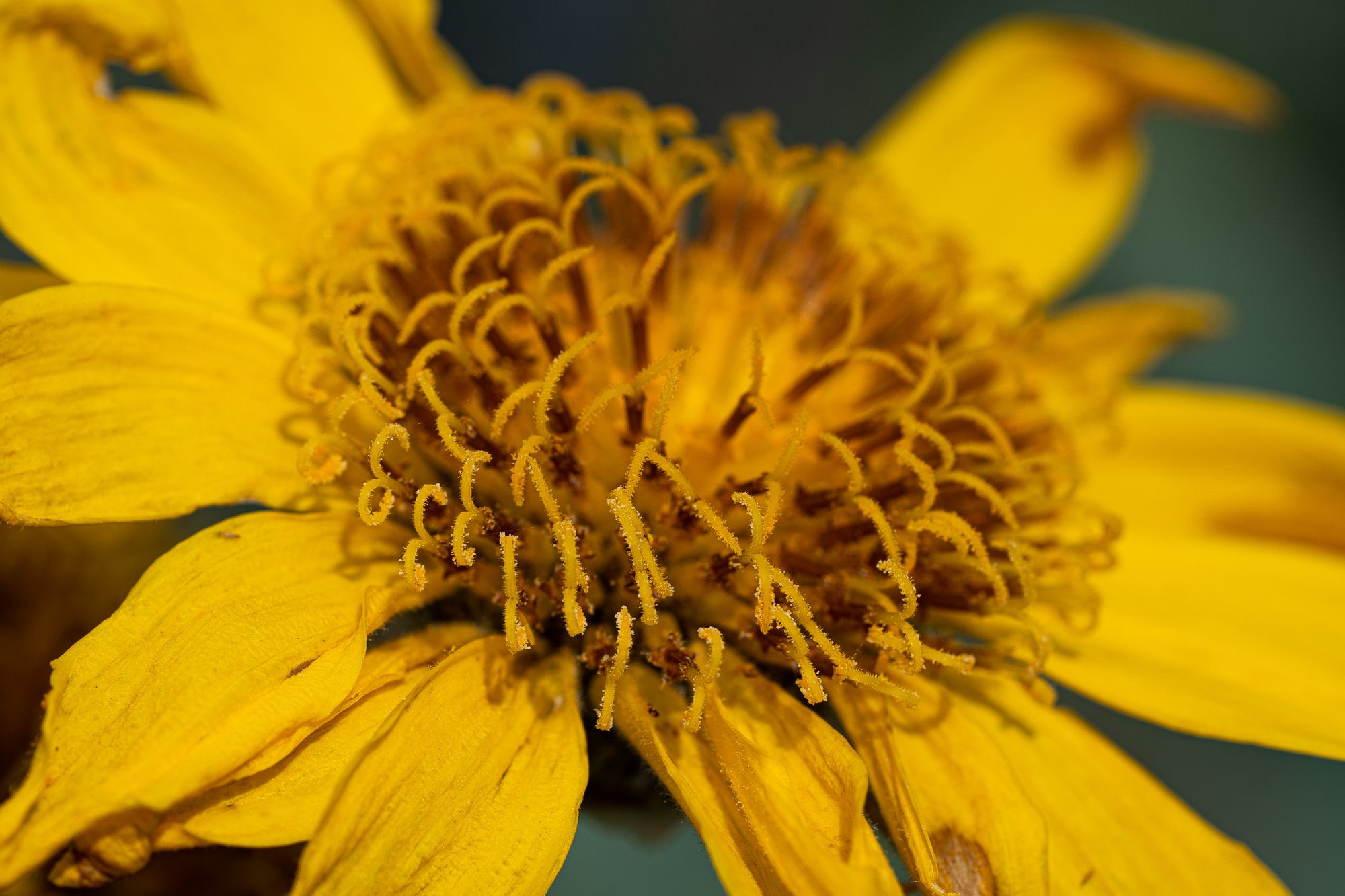
Composites are considered one of the most successful and advanced plant families in the world, with at least 30,000 species, and one of their most significant advantages is that tiny flowers by themselves would have a very hard time attracting the attention of pollinators, but by gathering together with other tiny flowers they cooperate to create an extremely showy head. These showy heads are irresistible to pollinators and in one study over 178 species of insects visited a single species of composite flower.
Composite flower heads typically consist of two types of tiny flowers (florets): There are ray flowers that form an outer ring of "petals," and disk flowers that cluster tightly together in the center.
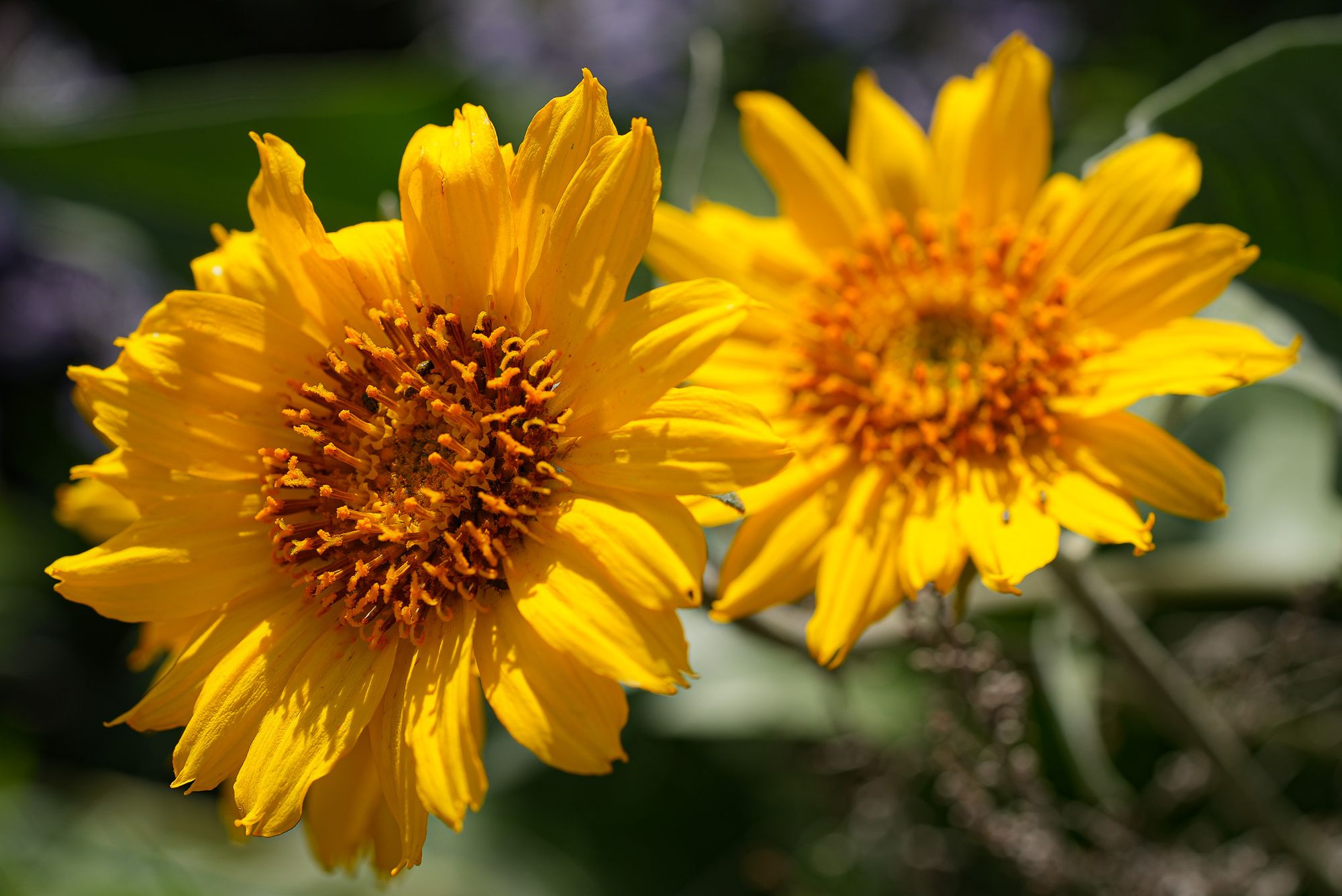
Ray flowers usually only have female parts, and form as three petals fuse and then elongate to create a single strap-like ray. These rays offer a broad, colorful platform where insects can easily land and then walk into the flower head.
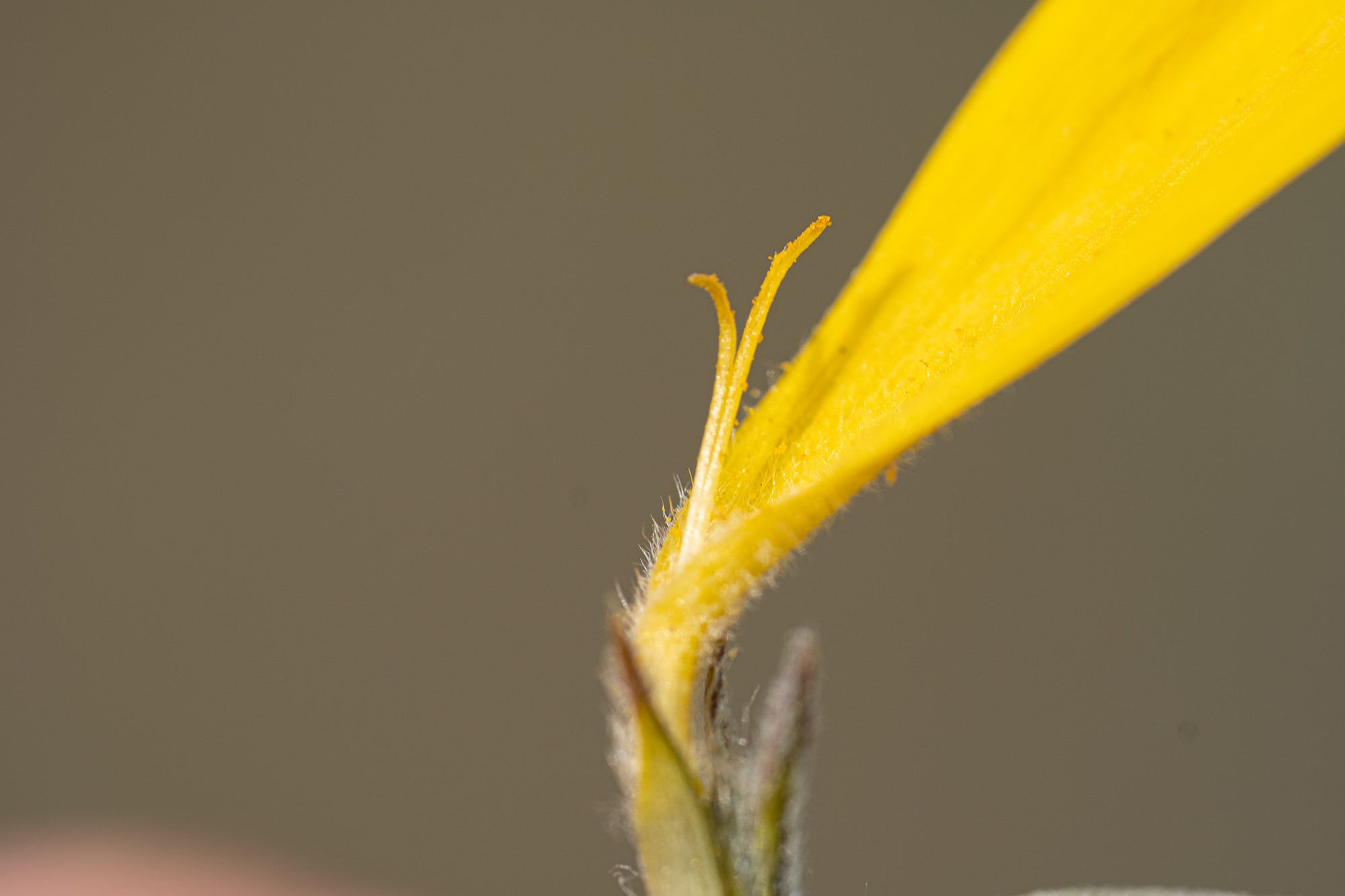
Disk flowers in the center of the flower head are a bit more complicated because they have both male and female parts and they complexly structure these parts in time and space so these densely packed flowers don't pollinate themselves.
Most composites are protandrous, which means that male parts (filaments and anthers) develop and produce pollen first, and only after the male parts are finished will female parts (styles and stigmas) open up to receive pollen from other plants.
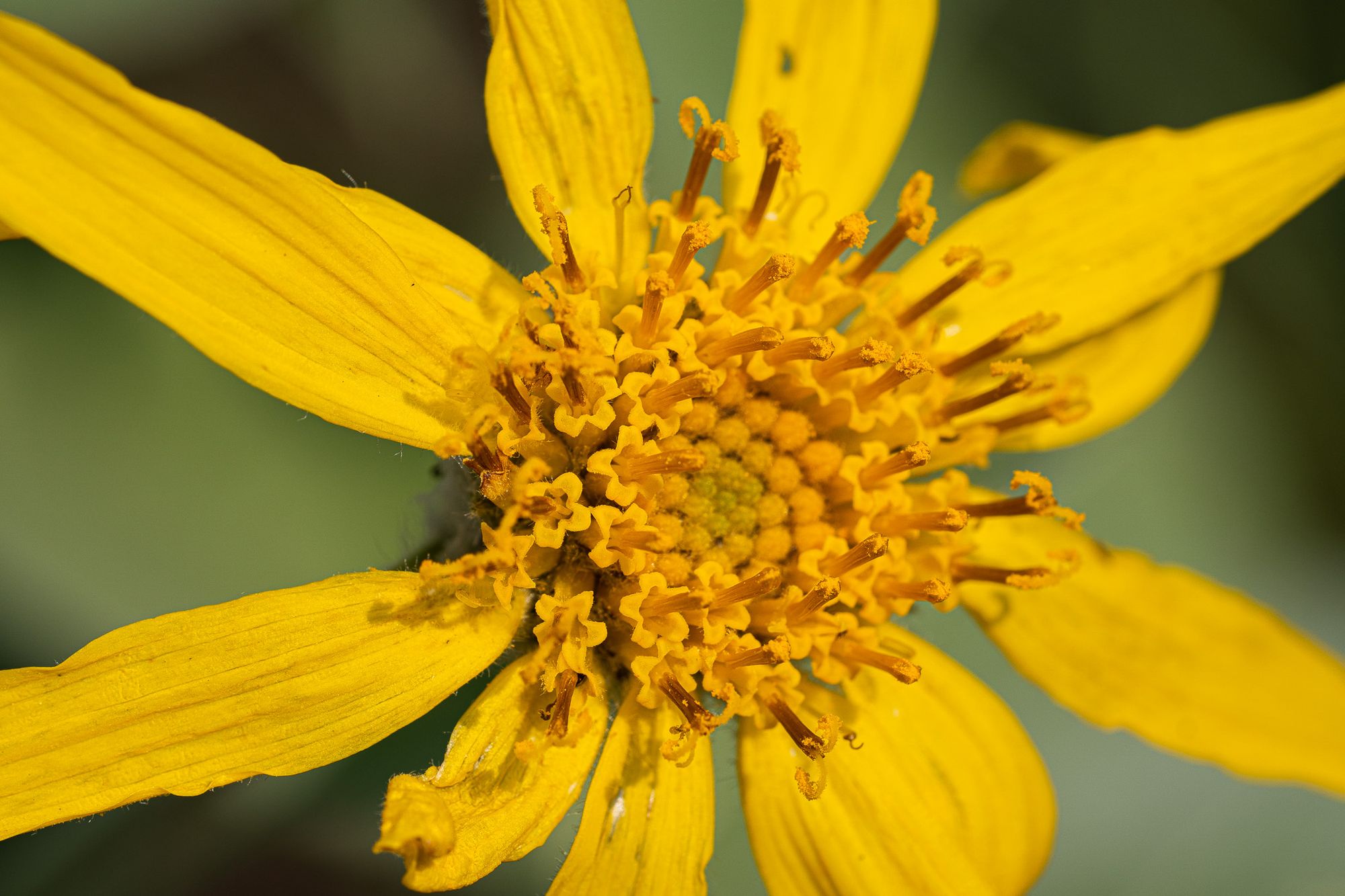
(You can skip this part if you don't want to nerd out, but what's going on here is really amazing...)
Both male and female parts are initially held in a closed, narrow corolla tube. Inside the corolla tube, the five anthers fuse to create an inner tube, then the anthers release all their pollen inside this anther tube.
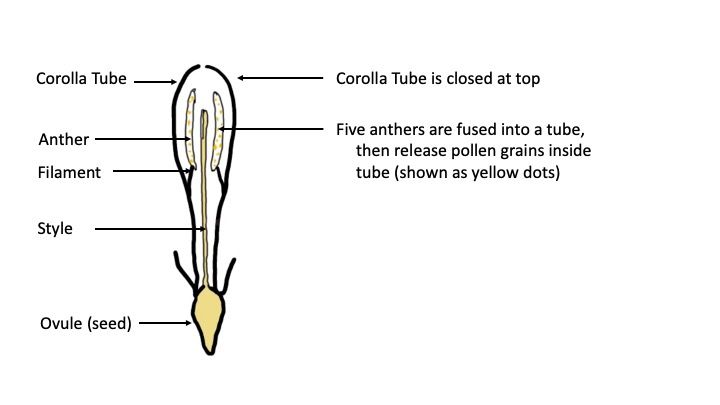
The female style, which has a tip with two stigma lobes pressed together, forms a piston that pushes up through the center of the anther tube. The style has a brush-like head of bristles that scrapes male pollen off the inner wall of the tube and pushes open the top of the corolla tube to present the pollen to visiting insects.
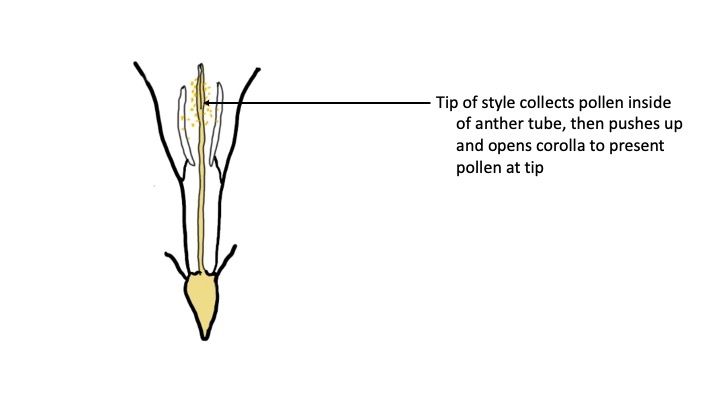
The style actually delivers pollen to visiting insects in episodes that are triggered by the insect's movements. When an insect walks on a flower it causes the five thread-like filaments at the base of the anther tube to contract, pulling the anther tube down like a sleeve to reveal the style tip. After a few moments, the filaments relax and return to their normal length, hiding the style tip again until the next insect visits.
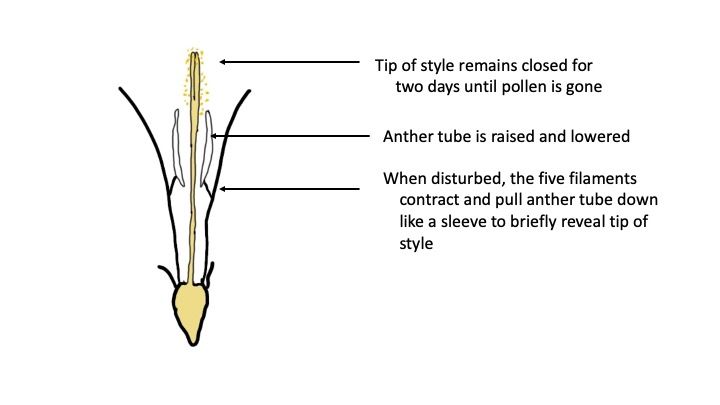
After all the male's pollen is gone, the two stigma lobes begin to curl apart to reveal their sticky inner surface in preparation for receiving pollen brought to the flower by insects visiting from other flowers.
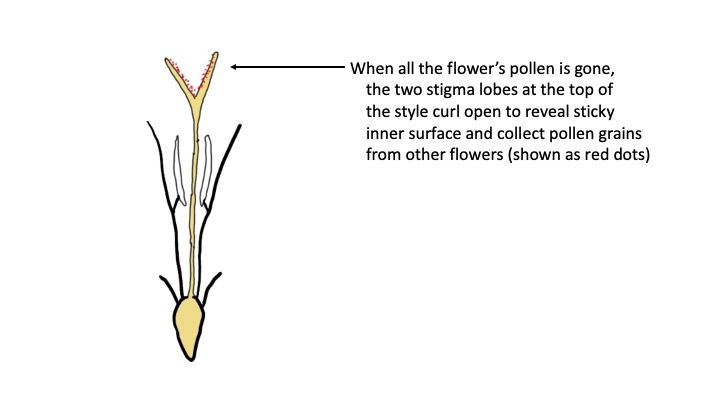
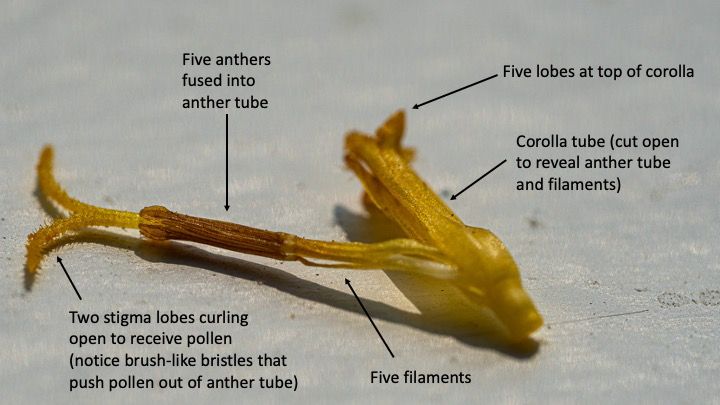
What's even more interesting is that if the flower isn't visited by a pollinator the two stigma lobes continue to curl downwards until they touch their own anther tube in search of leftover pollen grains from its own anthers.
Self-pollination is not ideal, but it's far better to produce replica seeds of yourself and come back to try again the next year than produce no seeds and miss an entire flowering season. This self-pollinating backup strategy might even be one of the reasons why composites are such a phenomenally successful group of flowers.
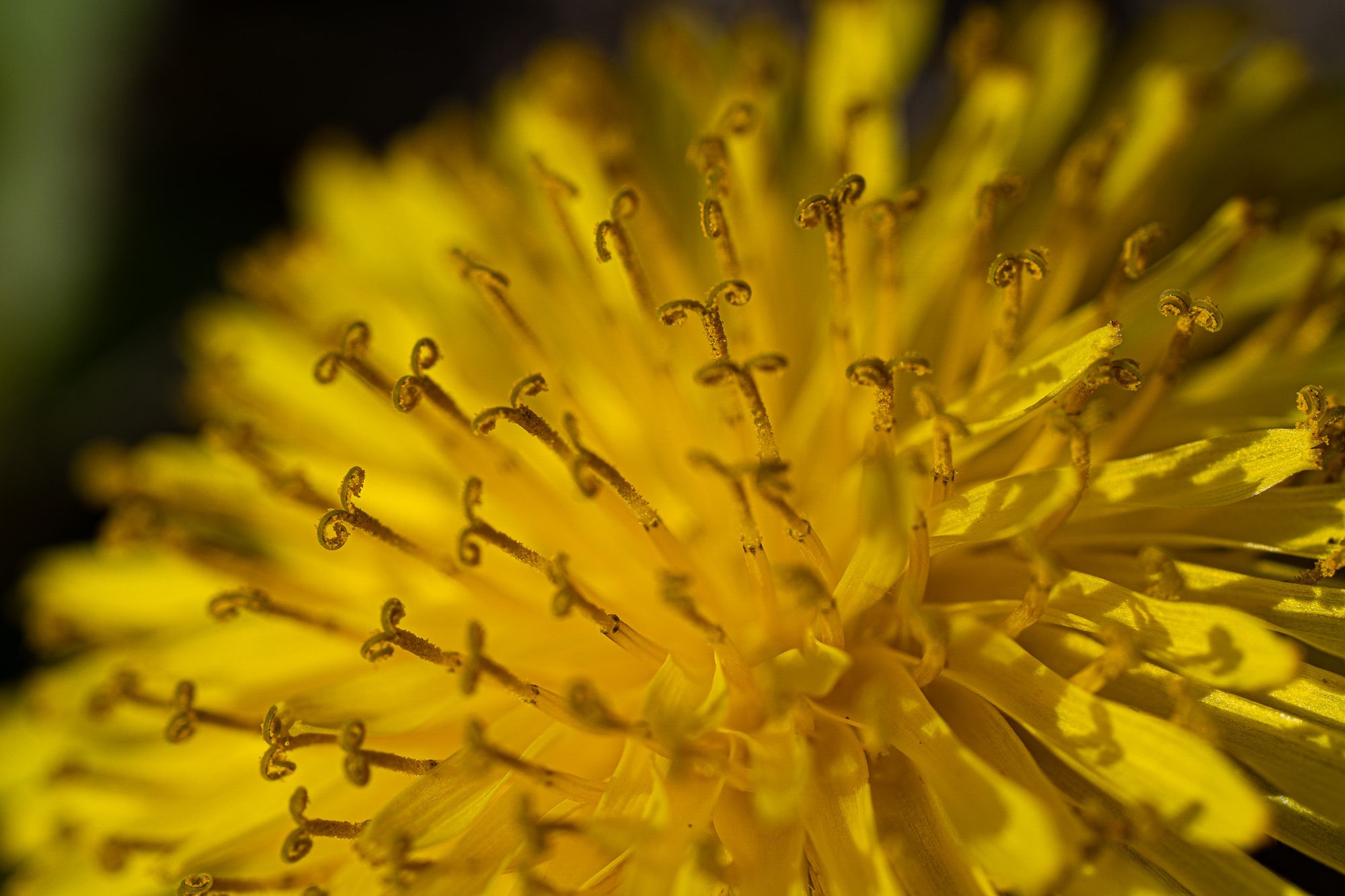





Member discussion